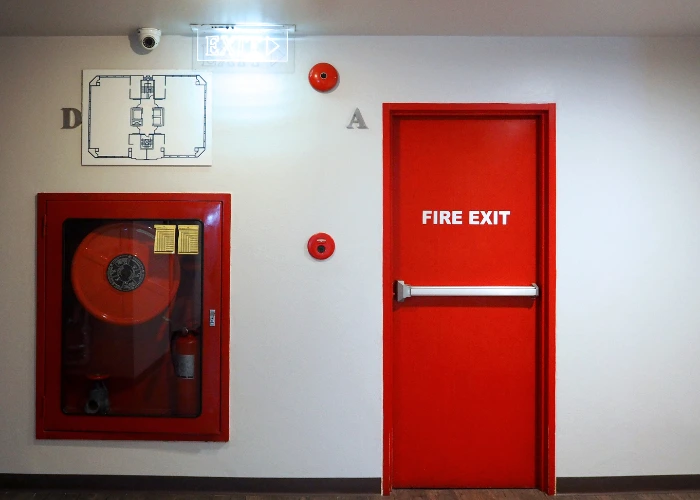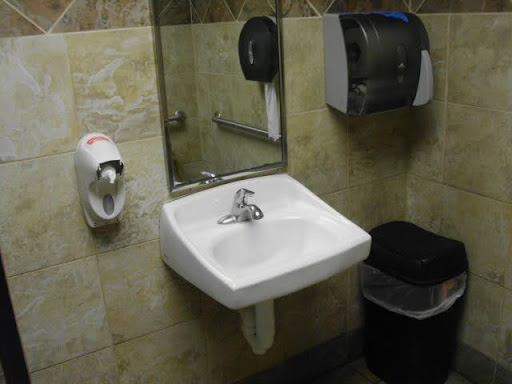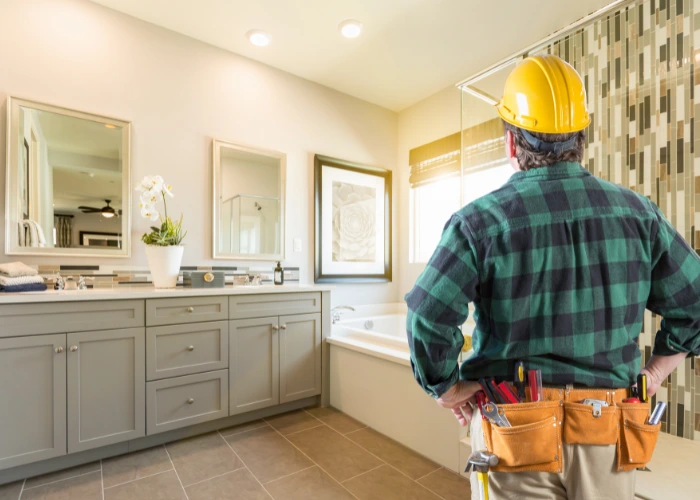

ADA compliance is important in every area of a building including the restrooms. You can identify an ADA-compliant restroom with proper sink clearance. This ensures that everyone including wheelchair users and those using mobility aids can comfortably use the sink. ADA sink clearance is important in ensuring safety for everyone.
This article will explain more about the importance of sink clearance in ADA-compliant restrooms. Continue reading to learn more:
The space under the sink must be clear and allow people in wheelchairs to roll up comfortably and access the faucet. This requires at least 27 inches of vertical clearance from the floor to the bottom of the sink.
There must be enough space under the sink for knees and toes. According to the ADA guidelines, the required minimum is 17-25 inches of horizontal clearance and at least 30 inches of width under the sink.
The top of the sink should not be higher than 34 inches above the floor. This allows wheelchair users to access the sink easily.
The main reason for ensuring proper sink clearance in your restroom is to provide easy access for people with disabilities. Restrooms are private spaces and everyone should be able to use them without being assigned. However, sinks that are too high or have insufficient knee and toe space can hinder people with disabilities from using the restroom comfortably.
Sink clearance doesn’t only increase comfortability, it also creates a safe restroom environment. People using wheelchairs or other types of mobility aids require sufficient space to move around the restroom. Insufficient space could lead to accidents such as someone bumping into the sink or getting stuck. When this happens, it defeats the purpose of accessibility and increases the risk of accidents and injuries.
Meeting ADA guidelines and requirements when building a restroom is a legal requirement. Failure to comply with these requirements can lead to fines, lawsuits or more costs in the renovation. Adhering to the guidelines from the onset helps you save more money in the long run by avoiding legal non-compliance issues.
Creating an accessible environment extends beyond meeting legal standards; it’s about creating spaces that are accommodating and easily accessible to everyone. An accessible restroom allows users to use the room independently.

Sink clearance is an important aspect of ADA compliance that cannot be overlooked. Ensuring that the sinks in your building provide adequate space for your customers, family and friends is crucial in creating an accessible environment for everyone including those in wheelchairs. Prioritizing ADA compliance in your business or organization yields a long-term interest as you’ll discover in the increment of your customer base and the amount of referrals your business receives.



Navigating building code compliance means balancing three distinct frameworks: the Americans with Disabilities Act (ADA), the International Building Code (IBC), and the National Fire Protection

Vague ADA deficiency reports cost thousands in rework and project delays. Contractors need specific measurements, clear photographs, exact code references, and actionable remediation steps to